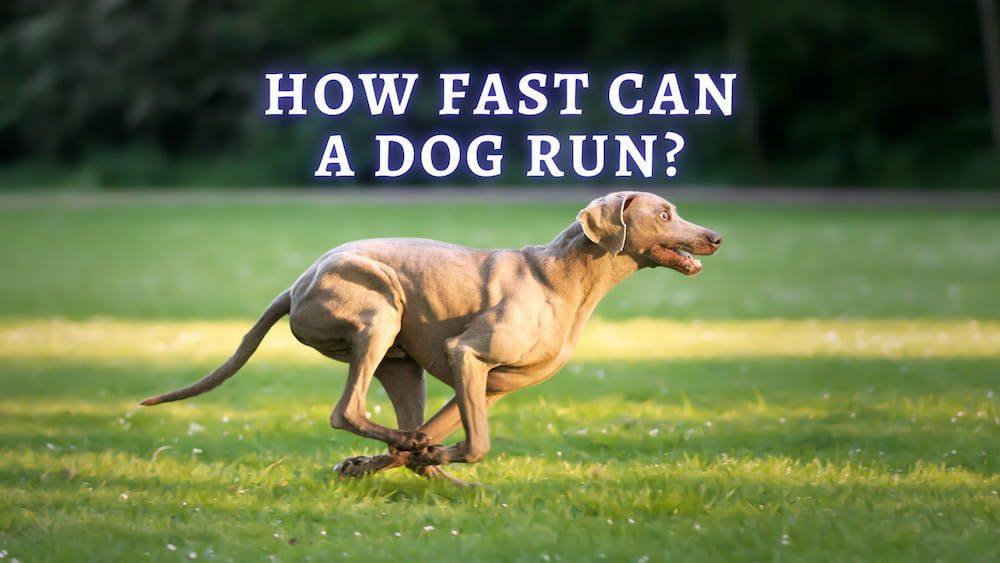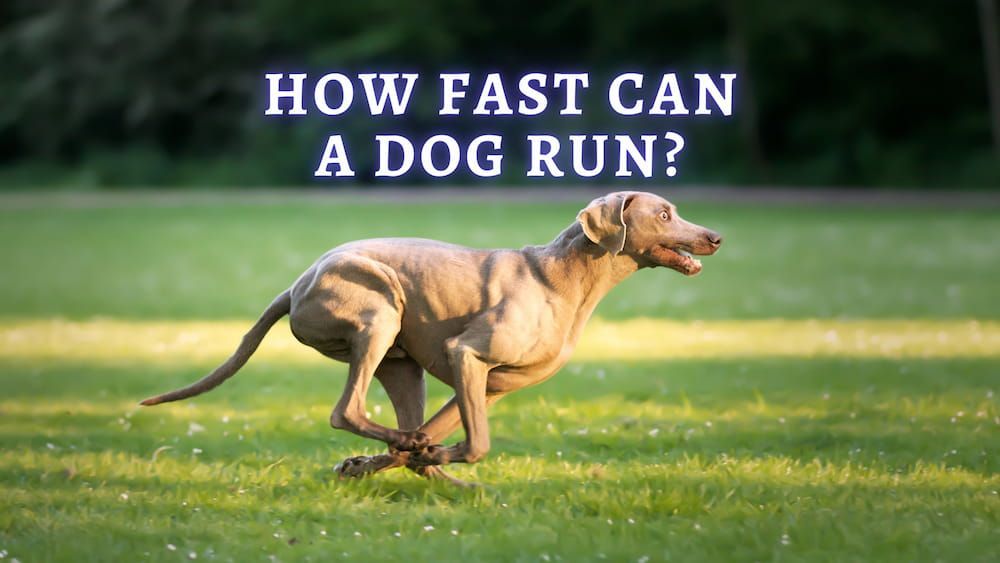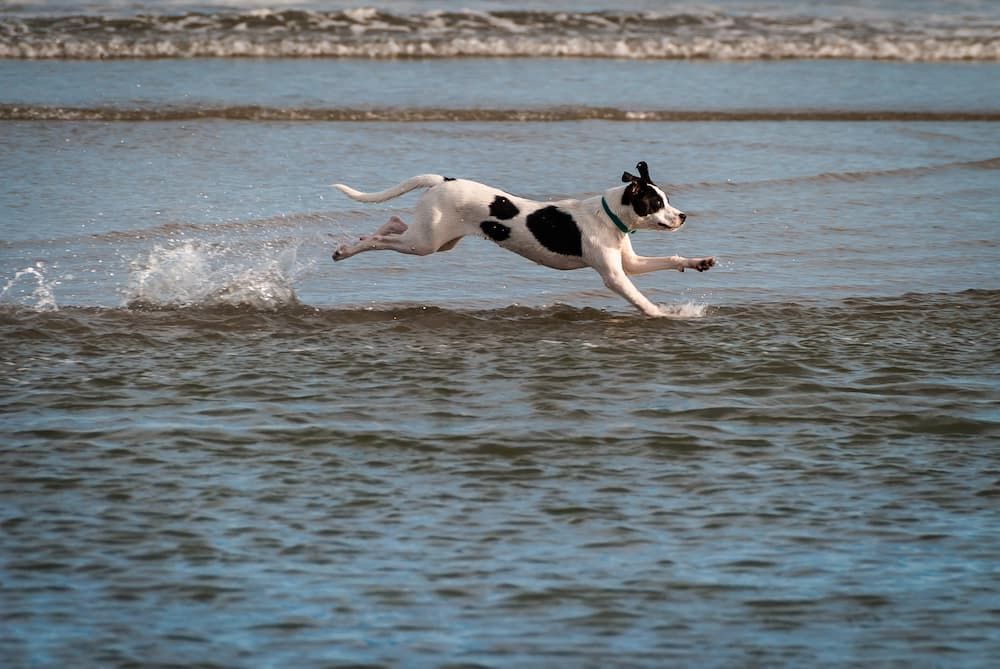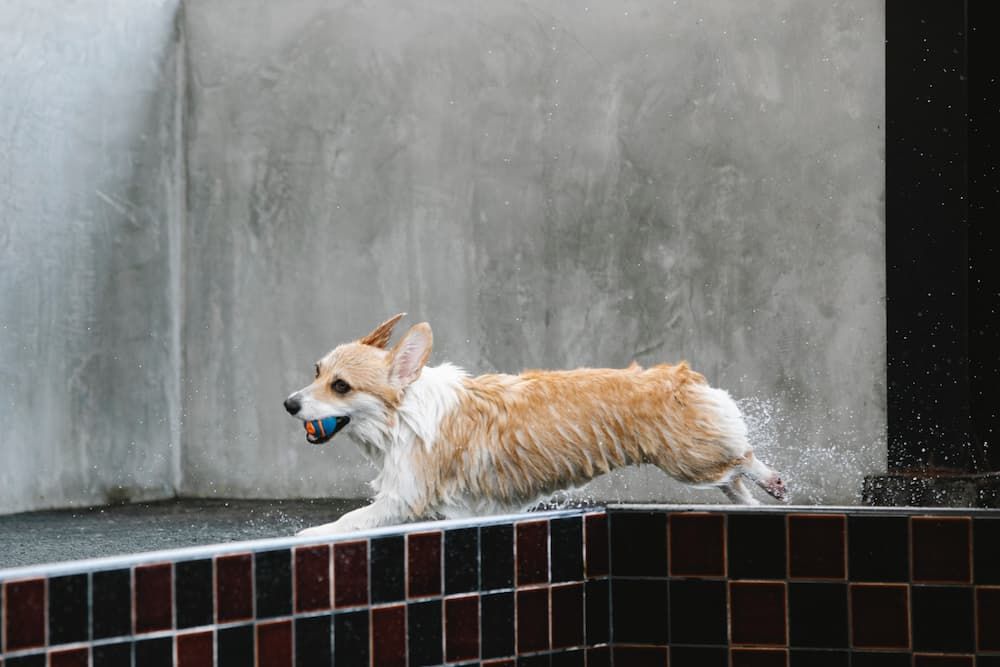
Have you ever seen a dog racing through the park and beating out a number of the others for speed? Some dogs can simply run much faster than others, and not every dog has the same type of running style as their cousins or similar breeds.
The speed that a dog runs comes down to several factors. When we look at the composition of many types of dogs, some breeds are built for speed, and some will run a bit slower than others.
The speed of a canine comes down to how they are built, the size of their legs, their genetic predispositions, and many other factors.


Photo from Freepik
Some short-legged breeds can be slower, and some long-legged breeds can be slow because of their body composition. When we look at how dog runs and how their bodies are shaped, we need to consider how they can get up to running speed.
This article will look into some of the ways dogs run and what makes for the fastest breed of dogs. If you are trying to find a dog that can run faster or want one that will be the best runner for competitions like agility, consider some of these top factors and more.
What makes a Dog fast?
Many factors can make one breed run much faster than other breeds. Here are some of the main attributes that make canines faster:
1. Their body aerodynamics
When we look at greyhounds, we start to understand how body aerodynamics are so important. They can reach speeds of up to 45 miles per hour because they have such a specialized body. Their body shape comes down to the aerodynamic shape, which is designed to achieve high speeds. These dogs can run much faster because they have a small head, a flatter rib cage, and very muscular legs that minimize their air resistance. [1]
Because of the slender shape of their body and because of their muscular legs, these are dogs that will always be consistently faster than other breeds.
2. The shape of their paws
A dog’s paws are also shaped in different manners so that they can accelerate faster. Just as a sprinter will likely wear specialized shoes, your fast canine will have a specific shape of a footpad that can help them grip nearly any surface. A dog’s toenails will provide traction while running at high speed. The shape of a paw and the surface area of a paw will play a significant role in how they can accelerate and how a dog can also move while they are in a full run.
As well as the paws, toenails play a big role in how your canine friend can get to their top speeds. When a dog has overgrown toenails, they can risk their nails breaking or snagging during the run. Rather than a dog experiencing the pain and bleeding of a broken nail, it is usually best to consider trimming back their nails so that injuries can be prevented.
3. Their typical gait
A dog will also have 4 main gaits for its stride. They can usually gallop, canter, trot or walk to remain efficient in their energy levels. A gallop is an entire run, and this type of gait happens when a pet can lift all their legs off the ground as they are running. All dogs can achieve this, but the time they can stay in the air can be crucial to picking up speed.
Some breeds are capable of a double suspension gait. This happens when they experience a full extension of the front and rear legs extended. The back feet will overtake the show, and the hind legs can go right under the shoulders for the longest stride. Only specific breeds can get into this position, and it is usually a gait reserved for dogs like Greyhounds and whippets.
4. Shoulder flexibility
A dog has a shoulder bone that is quite different from our own. They do not have a collarbone in the same way that humans do, and as a result, they can enjoy a longer stride that makes it much easier for them to enjoy easier and faster running. Dogs with greater flexibility beyond the missing shoulder components can enjoy a far greater range of motion and a longer stride.
If a pet can work their shoulder muscles and enjoy greater flexibility in the shoulders, they can often see a much faster speed.
READ MORE: Can a dog walk with a torn ACL? Vet Advice


Photo by Matt Benson on Unsplash
5. Respiratory & Cardiovascular System health
Strong respiratory and cardiovascular systems can impact the running endurance of a dog. Just like humans, dogs that regularly get out and run will be in better shape than their counterparts. Some breeds can be at a disadvantage due to poor respiratory health, larger heats, and more.
Bulldogs, for example, have shorter snouts and often experience respiratory problems. As a result, their nostrils are usually disadvantaged in cardiovascular health and maintain a faster run over time. Sighthounds, on the other hand, have the advantage of pumping blood faster with a big heart. Their powerful heart can keep up with the blood flow required to keep them going at very high speeds. Sighthounds also benefit from larger nostrils, larger lungs, and a frame that is built for endurance. These are dogs that can run over long distances and with high efficiency.
6. Longer Limbs (legs)
A bigger dog can often run much faster because they have a longer leg and a greater stride. As soon as a dog can move longer in each stride, it gets easier for them to move longer distances using less energy. A long leg does not always mean speed. However, large breeds like Mastiffs and Great Danes do not have the same body and weight balance as a dog like a greyhound. Mastiffs and Great Danes carry too much weight, and even though they can produce a longer stride, they will not be able to provide the same foot strike or the same strike on the ground that will help them bounce up stride again.
Differences in weight, cardiovascular systems, and an overall balance change running speed.
7. Tail balance
Your pup needs to practice with their tail to properly counterweight movements. When a dog needs to change its running direction fast, it will need to move its tail to counteract the body. When running at a fast speed, you may notice a dog using their tail almost like a rudder to prevent them from spinning off course or getting their feet off balance as they change direction.
How Dogs accelerate so quickly?
Canines can instantly jolt into a run from a steady walk or from a stopping point even though they have similar muscles, joints, ligaments, and tendons to humans.
When we look at Olympic sprinters, we can see that they can put peak forces into their legs at 900-1000 lbs of pressure in each step at a top-level.
Dogs can put the same level of force into 4 legs.
The skeletal shape of a dog is also designed to run much more efficiently than humans. Their legs have evolved over time for rapid acceleration and to be able to stalk and then completely overcome prey animals. As dogs have evolved from wild animals like wolves, many breeds, including hounds, retrievers, and huskies, are closest to Wolves, and they will have greater abilities to jump into a sprint or to run with endurance when compared to other breeds. The reason for this success comes with their leg shape and the fact that the angle of their head and the rear legs are similar to a wolf skeleton still today. This shape improves the efficiency of each running stride and ensures that more energy can be reused in every running stride.
How Fast Can Dogs Run?
On average dogs can run around 15-20 miles per hour, but some breeds are capable of reaching speeds much higher with training. Greyhounds that race competitively is able to reach a top speed of 40-45 miles per hour consistently with the top unofficial record coming from an Australian greyhound that had a recorded time of 50.5mph.


Photo by Blue Bird from Pexels
READ MORE: How to Travel With a Dog?
Fastest dog breeds
- Greyhounds are still at the top of our list of the fastest breeds. They can reach speeds well above 45 mph. Other breeds that are close include Saluki, Afghan Hounds, and Vizsla, reaching speeds of 40-42 mph.
- Dalmatian, Jack Russel Terriers, Borzoi, and Whippets can reach speeds of 35-38 mph and then breed like Doberman Pinscher, Border Collie, Poodle, and German Shepherds that can run 30-32 mph.
Slowest breeds
Smaller breeds often fall into those that are classified as slower runners. At the bottom of the list are breeds like Shih Tzu, Pug, Chihuahua, and Bassett hounds that all typically have top 5-10 MPH speeds. Pekinese, Pembroke Welsh Corgi, Japanese Chin, and toy poodles are a bit faster at 8-10 MPH, and larger breeds like the Old English mastiff and Bulldog varieties can reach just 12-15mph.
Best Long Distance Running Breeds
Such breeds are top endurance and have the ability to maintain a consistent speed of 10-15 mph over hours.
Dogs like this are best suited for sledding and multi-day travel. Dogs that have evolved for endurance running include the German Shorthaired Pointer, Siberian Husky, English Setters, Dalmatians, Labrador Retriever, and more.
FAQ
What is the fastest dog?
Greyhounds are the best breed built for speed. They have been involved and bred for the racing industry in the USA. Greyhound racing remains legal in several states and includes competition from selectively bred dogs for their speed. The average speed of top running dogs has increased 15% since the races began recordkeeping in 1927.
How fast is the fastest dog in the world?
The fastest speed recorded in an official race from a greyhound was in Australia, where a dog ran a race at 41.8 mph in 1994. Unofficial practice records were set for a peak time of 50.5 mp with another dog in Australia. No other one has been able to beat a peak speed of 50+ mph.
Can you outrun a dog?
Certain dogs may be possible to outrun. Their biological makeup will really influence the way that they are able to run and the speeds that they can run at. You may also find it easier to outrun your pouch when they are tired or when they don’t have great endurance.
Are dogs faster than humans?
Over short distances, almost every dog is able to beat a human just with the advantage of their 4 legs to our two. On average they can sprint at 15mph, but even the fastest sprinter Usain Bolt, can reach a peak speed of 27.8 MPH only over short distances.[2] The average human can only reach an average speed of 8.46 mph, faster than only a few select dog breeds. Some of the shorter, heavier, or less fit breeds may find it difficult to stay faster than humans. By training with your canine friend, however, you can both start running faster!
{"@context":"https://schema.org","@type":"FAQPage","mainEntity":[{"@type":"Question","name":"What is the fastest dog?","acceptedAnswer":{"@type":"Answer","text":"Greyhounds are the best breed built for speed. They have been involved and bred for the racing industry in the USA. Greyhound racing remains legal in several states and includes competition from selectively bred dogs for their speed. The average speed of top running dogs has increased 15% since the races began recordkeeping in 1927."}},{"@type":"Question","name":"How fast is the fastest dog in the world?","acceptedAnswer":{"@type":"Answer","text":"The fastest speed recorded in an official race from a greyhound was in Australia, where a dog ran a race at 41.8 mph in 1994. Unofficial practice records were set for a peak time of 50.5 mp with another dog in Australia. No other one has been able to beat a peak speed of 50+ mph."}},{"@type":"Question","name":"Can you outrun a dog?","acceptedAnswer":{"@type":"Answer","text":"Certain dogs may be possible to outrun. Their biological makeup will really influence the way that they are able to run and the speeds that they can run at. You may also find it easier to outrun your pouch when they are tired or when they don\u2019t have great endurance."}},{"@type":"Question","name":"Are dogs faster than humans?","acceptedAnswer":{"@type":"Answer","text":"Over short distances, almost every dog is able to beat a human just with the advantage of their 4 legs to our two. On average they can sprint at 15mph, but even the fastest sprinter Usain Bolt, can reach a peak speed of 27.8 MPH only over short distances.[2] The average human can only reach an average speed of 8.46 mph, faster than only a few select dog breeds. Some of the shorter, heavier, or less fit breeds may find it difficult to stay faster than humans. By training with your canine friend, however, you can both start running faster!"}}]}
Article Sources:
- Kim, Jaemin. “Genetic Selection of Athletic Success in Sport-Hunting Dogs – PubMed.” PubMed, 1 Jan. 2018, pubmed.ncbi.nlm.nih.gov/29970415/.
- “Biography.” Usain Bolt, usainbolt.com/bio/.






